(KODIAK) The Department of Defense, Office of Operationally Responsive Space will dedicate the TacSat-4 mission, an experimental tactical communication satellite being launched at the Kodiak Launch Complex, in memory of the 30 United States service members who made the ultimate sacrifice when their helicopter was shot down in Afghanistan on August 6.
The Chinook helicopter, call sign Extortion 17, was participating in a military operation supporting the International Security Assistance Force when it was shot down in the rugged Tangi Valley in Wardark province. The team aboard Extortion 17 included members of the elite U.S. Navy SEAL Team Six, United States Air Force Combat Controllers, a canine-handler and his dog, and the United States Army Aviators from Company B, Task Force Knighthawk.
“There may be no tribute that fully honors what this brave team did for our country,” said Dale Nash, Alaska Aerospace Corporation CEO. “The name Navy SEAL Team Six leaves an indelible image among us for their valor in America’s most celebrated post-9/11 military missions. But three months after removing Al Qaeda leader Osama Bin Laden, our nation mourned the loss of 22 members of this elite team and the other heroes aboard Extortion 17. We owe them our thanks.”
The selection of the Kodiak Launch Complex by the federal government for this mission demonstrates the significance of Alaska as a launch complex serving the needs of our nation. The TacSat-4 satellite will provide enhanced space-based communication to U.S. forces worldwide and increase the ability for U.S. service members to effectively communicate while on the move, at higher latitudes and geographically obscured areas such as is experienced in Afghanistan. The Office of Operationally Responsive Space funded the launch; the Office of Naval Research, through the Naval Research Laboratory sponsored development of the satellite; and the Air Force Space and Missile Systems Center, through the Space Development and Test Directorate managed the launch, with the rocket built by Orbital Sciences Corporation. The launch is scheduled for September 27.

